
Mouse Anti-Cystatin C antibody
Cystatin-3; Cystatin3; Cystatin 3; CystatinC; CST 3; CST3; CST-3; Cystatin C; AD 8; AD8; Amyloid angiopathy and cerebral hemorrhage; Cst 3; Cst3; CST3 protein; Gamma trace; HCCAA; Neuroendocrine basic polypeptide; Post gamma globulin; ARMD11; MGC117328; C
View History [Clear]
Details
Product Name Cystatin C Chinese Name 胱抑素C/半胱氨酸蛋白酶抑制剂C单克隆抗体 Alias Cystatin-3; Cystatin3; Cystatin 3; CystatinC; CST 3; CST3; CST-3; Cystatin C; AD 8; AD8; Amyloid angiopathy and cerebral hemorrhage; Cst 3; Cst3; CST3 protein; Gamma trace; HCCAA; Neuroendocrine basic polypeptide; Post gamma globulin; ARMD11; MGC117328; CYSC; CYTC_HUMAN. Research Area Tumour Cardiovascular Cell biology immunology Developmental biology Immunogen Species Mouse Clonality Monoclonal Clone NO. 9H8 React Species Human, Mouse, Applications WB=1:500-1000 ELISA=1:5000-10000 IHC-P=1:500-1000 IHC-F=1:500-1000 ICC=1:100-500 IF=1:500-1000 (Paraffin sections need antigen repair)
not yet tested in other applications.
optimal dilutions/concentrations should be determined by the end user.Theoretical molecular weight 14kDa Cellular localization Secretory protein Form Liquid Concentration 1mg/ml immunogen Recombinant human Cystatin C Protein Lsotype IgG Purification affinity purified by Protein G Buffer Solution 0.01M TBS(pH7.4) with 1% BSA, 0.03% Proclin300 and 50% Glycerol. Storage Shipped at 4℃. Store at -20 °C for one year. Avoid repeated freeze/thaw cycles. Attention This product as supplied is intended for research use only, not for use in human, therapeutic or diagnostic applications. PubMed PubMed Product Detail The cystatin superfamily encompasses proteins that contain multiple cystatin-like sequences. Some of the members are active cysteine protease inhibitors, while others have lost or perhaps never acquired this inhibitory activity. There are three inhibitory families in the superfamily, including the type 1 cystatins(stefins), type 2 cystatins and the kininogens. The type 2 cystatin proteins are a class of cysteine proteinase inhibitors found in a variety of human fluids and secretions, where they appear to provide protective functions. The cystatin locus on chromosome 20 contains the majority of the type 2 cystatin genes and pseudogenes. This gene is located in the cystatin locus and encodes the most abundant extracellular inhibitor of cysteine proteases, which is found in high concentrations in biological fluids and is expressed in virtually all organs of the body. A mutation in this gene has been associated with amyloid angiopathy. Expression of this protein in vascular wall smooth muscle cells is severely reduced in both atherosclerotic and aneurysmal aortic lesions, establishing its role in vascular disease. [provided by RefSeq].
Function:
As an inhibitor of cysteine proteinases, this protein is thought to serve an important physiological role as a local regulator of this enzyme activity.
Subunit:
Expressed in submandibular and sublingual saliva but not in parotid saliva (at protein level). Expressed in various body fluids, such as the cerebrospinal fluid and plasma. Expressed in highest levels in the epididymis, vas deferens, brain, thymus, and ovary and the lowest in the submandibular gland.
Subcellular Location:
Secreted.
DISEASE:
Defects in CST3 are the cause of amyloidosis type 6 (AMYL6) [MIM:105150]; also known as hereditary cerebral hemorrhage with amyloidosis (HCHWA), cerebral amyloid angiopathy (CAA) or cerebroarterial amyloidosis Icelandic type. AMYL6 is a hereditary generalized amyloidosis due to cystatin C amyloid deposition. Cystatin C amyloid accumulates in the walls of arteries, arterioles, and sometimes capillaries and veins of the brain, and in various organs including lymphoid tissue, spleen, salivary glands, and seminal vesicles. Amyloid deposition in the cerebral vessels results in cerebral amyloid angiopathy, cerebral hemorrhage and premature stroke. Cystatin C levels in the cerebrospinal fluid are abnormally low.
Similarity:
Belongs to the cystatin family.
SWISS:
P01034
Gene ID:
1471
Database links:Entrez Gene: 1471 Human
Entrez Gene: 13010 Mouse
Omim: 604312 Human
SwissProt: P01034 Human
SwissProt: P21460 Mouse
Unigene: 304682 Human
Unigene: 4263 Mouse
Unigene: 106351 Rat
胱抑素C( cystatin c)是一种半胱氨酸蛋白酶抑制剂,也被称为γ-微量蛋白及γ-后球蛋白,广泛存在于各种组织的有核细胞和体液中,是一种低分子量、碱性非糖化蛋白质,分子量为13.3KD,由122个氨基酸残基组成,可由机体所有有核细胞产生,产生率恒定。循环中的胱抑素c仅经肾小球滤过而被清除,是一种反映肾小球滤过率变化的内源性Maker,并在近曲小管重吸收,但重吸收后被完全代谢分解,不返回血液,因此,其血中浓度由肾小球滤过决定,而不依赖任何外来因素,如性别、年龄、饮食的影响,是一种反映肾小球滤过率变化的理想同源性Maker。Product Picture
Hela(Human) Cell Lysate at 30 ug
Hcclm3(Human) Cell Lysate at 30 ug
Primary: Anti-Cystatin C (SLM-33286M) at 1/1000 dilution
Secondary: IRDye800CW Goat Anti-Mouse IgG at 1/20000 dilution
Predicted band size: 14 kD
Observed band size: 14 kD
Sample:
293T(Human) Cell Lysate at 30 ug
Primary: Anti-Cystatin C (SLM-33286M) at 1/1000 dilution
Secondary: IRDye800CW Goat Anti-Mouse IgG at 1/20000 dilution
Predicted band size: 14 kD
Observed band size: 14 kD
Sample:
A549(Human) Cell Lysate at 30 ug
U937(Human) Cell Lysate at 30 ug
Primary: Anti- Cystatin C (SLM-33286M) at 1/1000 dilution
Secondary: IRDye800CW Goat Anti-Mouse IgG at 1/20000 dilution
Predicted band size: 14 kD
Observed band size: 15 kD
Paraformaldehyde-fixed, paraffin embedded (human brain glioma); Antigen retrieval by boiling in sodium citrate buffer (pH6.0) for 15min; Block endogenous peroxidase by 3% hydrogen peroxide for 20 minutes; Blocking buffer (normal goat serum) at 37°C for 30min; Antibody incubation with (Cystatin C) Monoclonal Antibody, Unconjugated (SLM-33286M) at 1:400 overnight at 4°C, followed by operating according to SP Kit(Mouse)(sp-0024) instructionsand DAB staining.Paraformaldehyde-fixed, paraffin embedded (Human kidney tissue); Antigen retrieval by boiling in sodium citrate buffer (pH6.0) for 15min; Block endogenous peroxidase by 3% hydrogen peroxide for 20 minutes; Blocking buffer (normal goat serum) at 37°C for 30min; Antibody incubation with (Cystatin C) Monoclonal Antibody, Unconjugated (SLM-33286M) at 1:400 overnight at 4°C, followed by operating according to SP Kit(Mouse)(sp-0024) instructionsand DAB staining.
References (0)
No References
Bought notes(bought amounts latest0)
No one bought this product
User Comment(Total0User Comment Num)
- No comment
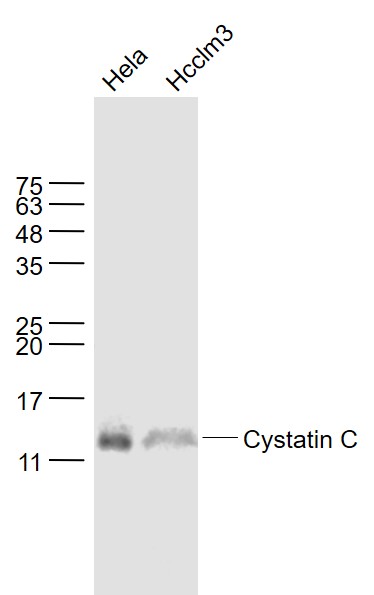
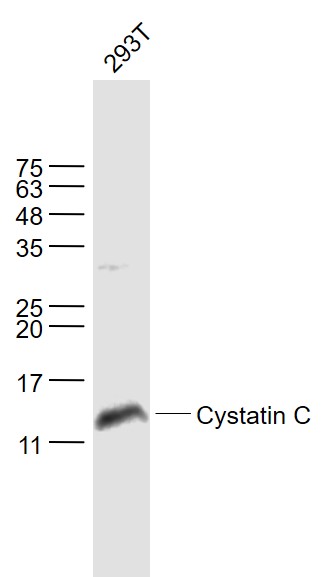
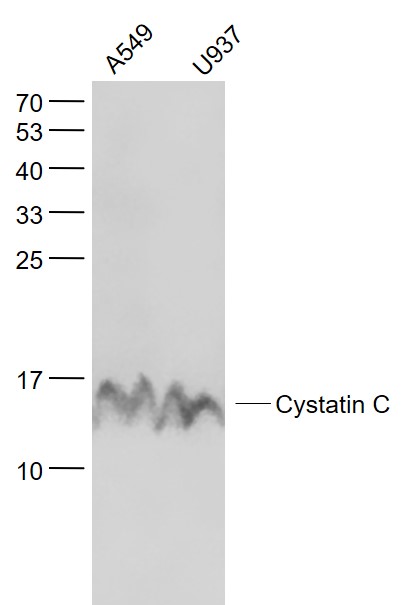
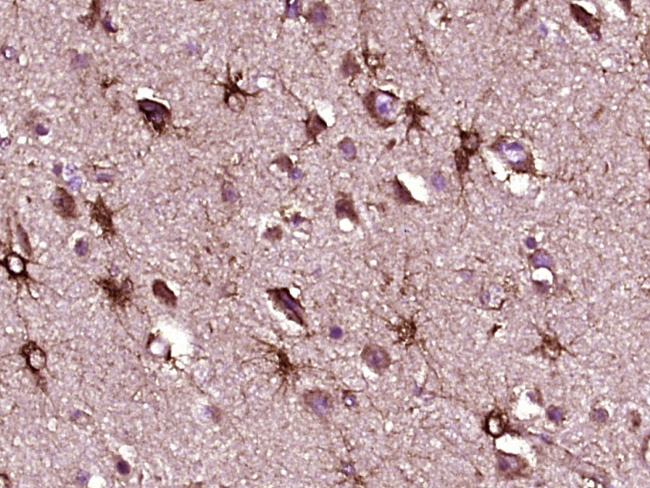
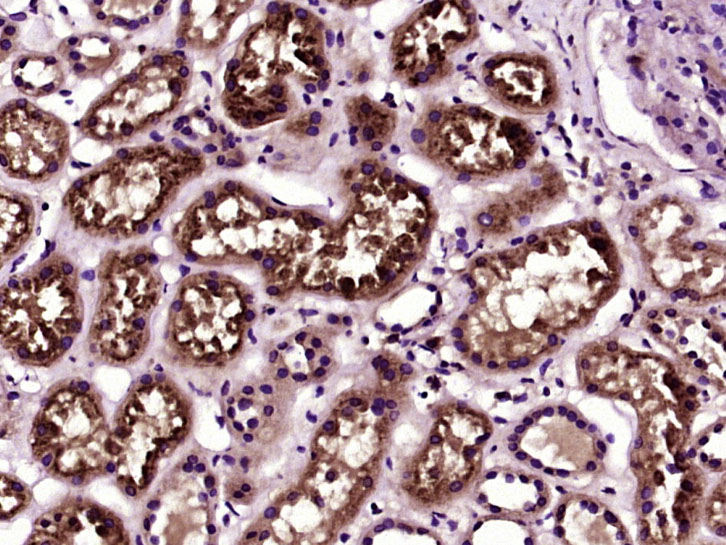


 +86 571 56623320
+86 571 56623320
 +86 18668110335
+86 18668110335

